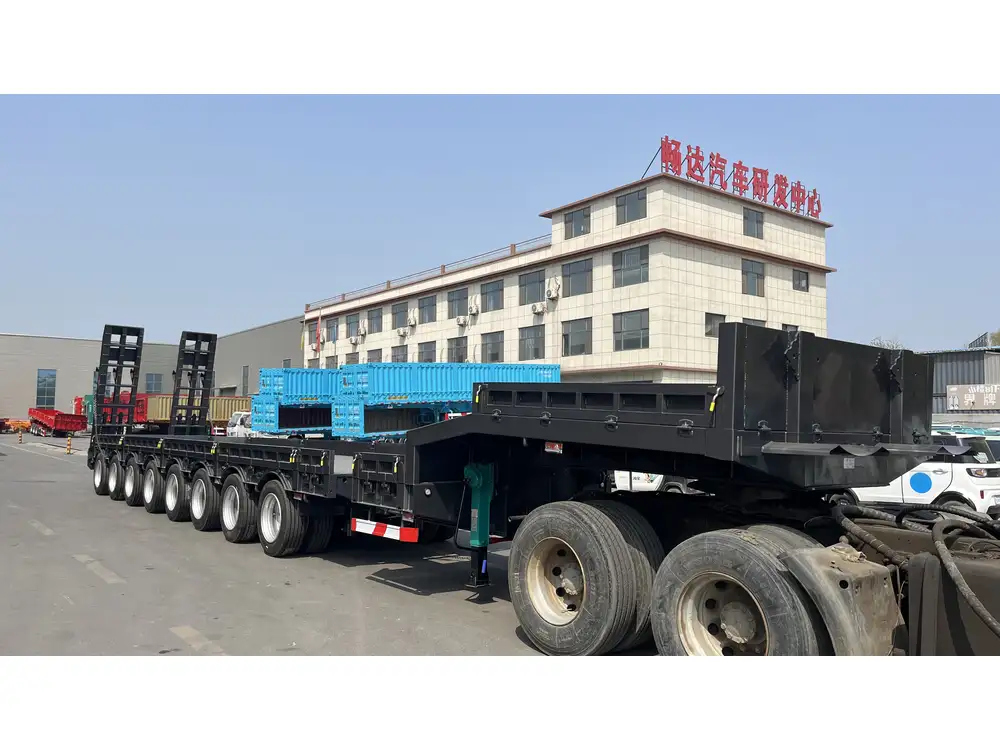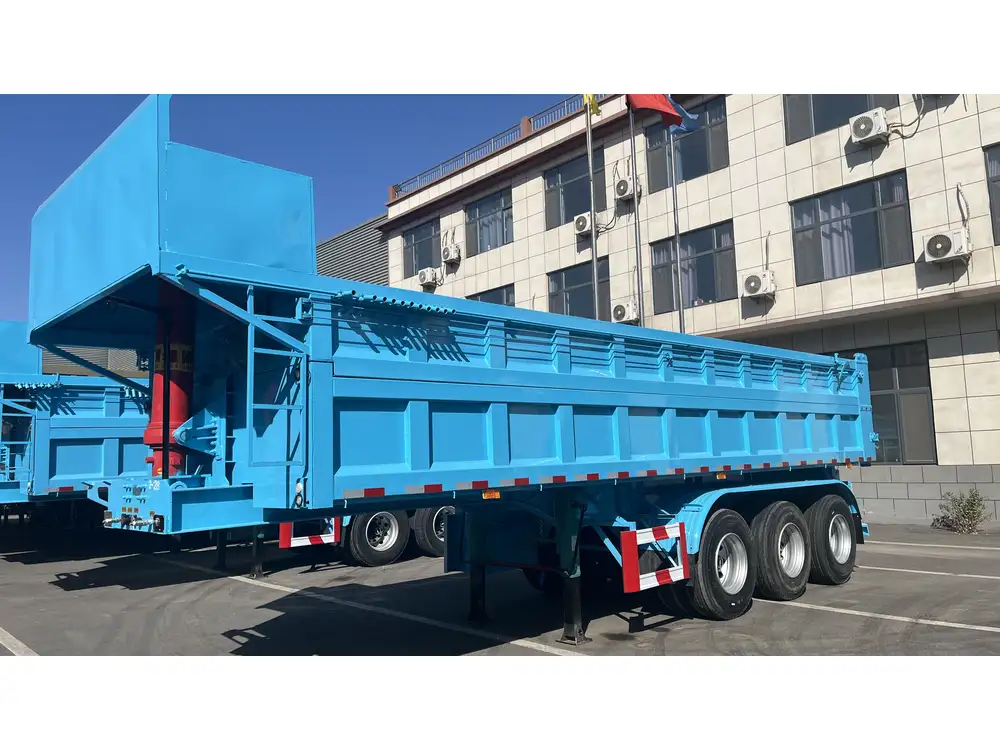When considering a dump trailer, one of the foremost questions that arise is: how much does a dump trailer hold? This question encapsulates not only the trailer’s weight capacity but its design specifications and practical applications. In this comprehensive article, we will delve into various aspects surrounding dump trailers, focusing on their capacities, construction types, and factors influencing their efficiency and performance. Our aim is to provide you with an in-depth understanding to facilitate your purchasing decision.
What is a Dump Trailer?
A dump trailer is a versatile piece of equipment primarily designed for hauling materials. The functionality hinges on its ability to unload its contents through a hydraulic system, providing a convenient solution for uneven terrains or bulk material transport. Common uses include construction sites, landscaping projects, debris removal, and agricultural applications.
Types of Dump Trailers
Standard Dump Trailers
- Often featuring a hydraulic lift at the front to raise the trailer’s bed, this design allows for easy unloading of loose materials.
Dump Gooseneck Trailers
- A gooseneck design provides a greater towing capacity due to its unique hitch system and is commonly employed in larger loads, suitable for heavy-duty hauling.
Tilt Trailers
- This type allows for a lower loading height and a quick unloading process; however, they might not handle larger loads compared to standard dump trailers.

Key Specifications
| Specification | Standard Dump Trailer | Gooseneck Dump Trailer | Tilt Trailer |
|---|---|---|---|
| Capacity (Cubic Yards) | 5 – 20 | 10 – 25 | 3 – 7 |
| Length (Feet) | 10 – 16 | 14 – 26 | 10 – 16 |
| Weight Capacity (lbs) | 3,000 – 14,000 | 10,000 – 25,000 | 2,000 – 7,000 |
| Towing Mechanism | Ball Hitch | Gooseneck | Ball Hitch |
Determining Capacity: What to Consider
1. Material Density
The effective capacity of a dump trailer is highly influenced by the type of material being loaded. Different materials have varied densities:
- Soil/Earth: Generally weighs about 1,400 – 2,000 lbs per cubic yard.
- Gravel: Typical weight ranges from 2,500 – 3,000 lbs per cubic yard.
- Asphalt: Approximately 2,300 – 2,700 lbs per cubic yard.
- Concrete: Can weigh as much as 4,000 – 4,500 lbs per cubic yard.
Understanding the density of your assessed material is crucial in calculating how many cubic yards your trailer can effectively carry.

2. Legal Weight Limits
Before loading your dump trailer, consider the legal weight standards applicable:
- Federal Highway Administration (FHWA) establishes restrictions that usually limit total vehicle weight (trailer included) to 80,000 lbs.
- Individual states exhibit variances in their laws concerning axle weight limits. Always consult these regulations before transport.
3. Trailer Design
The construction of the dump trailer directly impacts its usability:
- Material Construction: Steel or aluminum trailers offer different strengths. Steele constructions are generally more robust but come with increased weight, potentially reducing payload capacity.
- Suspension System: A quality suspension system can add to the trailer’s longevity and improve load stability.
Calculating Capacity: A Simple Formula
To ascertain how much a dump trailer holds, utilize this basic formula:
[ \text{Max Weight Capacity (lbs)} = \text{Weight of Material (lbs/yd}^3\text{) } \times \text{Cubic Yards Capacity} ]For instance, for a standard 10 cubic yard dump trailer carrying gravel (let’s assume 2,500 lbs/yd³):
[ \text{Max Weight Capacity} = 2,500 \text{ lbs/yd}^3 \times 10 \text{ yd}^3 = 25,000 \text{ lbs} ]
Example Scenario
If you were to load this trailer with soil, which weighs approximately 1,600 lbs/yd³:
[ \text{Max Weight Capacity} = 1,600 \text{ lbs/yd}^3 \times 10 \text{ yd}^3 = 16,000 \text{ lbs} ]In this case, the trailer’s capacity to transport gravel would necessitate limiting its loads accordingly, ensuring you never exceed specified limits.
Applications of Dump Trailers
1. Construction Sites
Dump trailers are indispensable on construction sites, streamlining the transportation of heavy materials like sand, gravel, and concrete.

2. Landscaping
For landscaping projects, dump trailers are beneficial for hauling bulk mulch, sod, and waste disposal. Their convenience of easy unloading allows for enhanced workflow efficiency.
3. Debris Removal
In clean-up operations, particularly following severe weather events, a dump trailer serves to transport large quantities of storm debris or construction waste, clearing a site quickly and efficiently.
Advantages of Using a Dump Trailer
- Efficiency: The ability to unload materials quickly saves both time and labor costs.
- Versatility: Customizable for various load types—from soil to rock, accommodating the specific needs of different industries.
- Safety: Minimizes manual lifting, reducing the risk of injury on-site.

Choosing the Right Dump Trailer
Factors to Evaluate
- Capacity Needs: Analyze your load requirements based on projects’ demands and choose accordingly.
- Towing Vehicle Compatibility: Ensure your towing vehicle can handle the weight and hitch type of the selected trailer.
- Durability and Construction Quality: Assess materials used in the trailer’s construction concerning expected use conditions.
Question to Consider:
- Are you frequently hauling heavy materials, or is your focus on lighter loads?
- Will your trailer need to navigate through rugged terrain, or will it primarily service flat areas?

Maintenance Tips for Longevity
Maintaining your dump trailer preserves its value and ensures it operates efficiently. Here are key considerations:
- Regular Inspections: Schedule periodic checks for the frame, tires, and hydraulic systems. Early detection of wear can prevent unit failure.
- Lubrication: Keep all moving parts well-lubricated to minimize friction and potential damage.
- Cleaning: After each use, clean the trailer’s bed to prevent material residue from building up, safeguarding against rust and decay.
- Storage: Store the trailer under cover to shield it from UV exposure and moisture which can deteriorate its components over time.
Conclusion
In summary, understanding how much a dump trailer holds extends beyond just cubic yard capacity; it encompasses the nuanced interplay of various factors including material density, legal limits, and design specifications. By taking a comprehensive approach to your selection process, you can ensure that your dump trailer meets your operational demands and enhances your productivity. Whether for construction, landscaping, or debris removal, the right dump trailer can be invaluable in streamlining your workflow and elevating your project efficiency.
Always remember to consult with professionals or manufacturers when in doubt about weight limits or specific applications to ensure optimal performance and safety in all your hauling endeavors.



